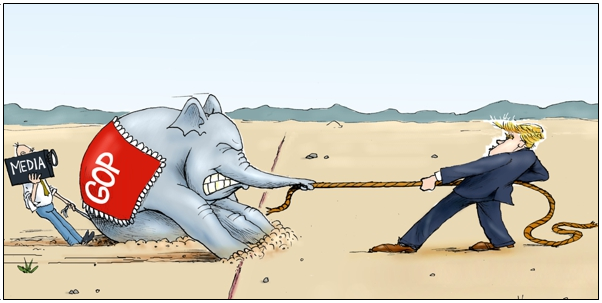If the tax plan put on the table by House Republicans is the final version of the tax bill, in the first four years, the tax cut will average $182.2 billion a year, according to the Joint Committee on Taxation.
That works out to 0.87 percent of the Gross Domestic Product (GDP) if you use the $21.76 trillion average annual GDP estimate projected by the Office of Management and Budget (OMB) for 2018 through 2021.
Right off the bat, let me say that is not terrible news. That’s larger than the 2001 tax cut, which came in at 0.71 percent of GDP, but not as large as the 1981 tax cut, which came in at 2.89 percent of GDP, according to data compiled by the U.S. Treasury official Jerry Tempalski in 2006.
But after the slowing growth experienced these past many years, where the economy has not grown above a 4 percent inflation-adjusted rate since 2000, and not above 3 percent since 2005, is the current tax cut plan big enough to get the economy moving again?
A couple of considerations. The Reagan tax cut of 1981 was based primarily on individual tax relief, cutting individual tax rates. So was the Bush tax cut in 2001.
The tax cut plan currently in Congress? Not so much. Half of the plan comes on the individual side, largely through tax simplification, doubling the standard deduction, and changes to the rate structure for individuals. The other half comes from corporate tax cuts, lowering the rate to 20 percent and keeping there, and other changes.
So, how could that change?
Although individuals will pay $848 billion less in overall taxes over 10 years, inside the plan are changes to deductions that individuals take. The state and local income tax deduction is being eliminated. The property tax deduction is being capped at $10,000. The mortgage interest deduction for homes currently owned will remain the same, but for newly purchased homes will be capped at the first $500,000 of principal owed on the mortgage.
Those changes add up to an additional $1.5 trillion of revenue for the federal treasury coffers. But what if everyone got to keep those deductions?
That would make the tax cut $1.5 trillion bigger than it is now. It would average $315 billion a year for the first four years, or equal 1.5 percent of GDP, totaling $2.98 trillion over 10 years.
And surely, it would be an even bigger boon to the economy — with the added benefit that not one person’s taxes would have been raised in the plan. Already despite concessions made in the tax plan, Republicans in highly taxed areas like Long Island — U.S. Rep. Lee Zeldin (R-N.Y.) stands at the center — have vowed to vote against the tax bill in its current form.
It may be, that to get the votes for the tax bill, and the biggest bang for the buck for the economy, is to cut everyone’s taxes. It makes political sense. And it makes economic sense. The marriage of good politics and good policy. How is raising taxes in some of the most highly taxed regions in the country among the wealthy going to help the economy get moving?
But if it turns out that to get there, to get the bill through on budget reconciliation, then another $1.5 trillion offset is needed, then Republicans should just do what they’ve always said they would do in political campaigns: Cut spending. It’s simple. President Donald Trump offered a budget with $4.5 trillion of spending cuts. Pick $1.5 trillion of them and put them in the budget, and the offset will be there. Or if that is not practical then just overrule the parliamentarian.
The benefits of a larger tax cut and finally getting the economy after more than a decade of stagnation far exceed the short-term costs on the budget treatment of the tax bill by the bean counters in Washington, D.C.
Already there are warning signs that another recession could be around the corner. And the flashing red light could be coming from none other than the U.S. Treasury itself.
The past four years revenues to the U.S. Treasury have been relatively slow, only growing at 1.5 percent in fiscal year 2017, a sign of a weakening economy since it means fewer new good-paying jobs and business profits. That’s slightly up from the tepid 0.5 percent seen in fiscal year 2016, but still nowhere close to what you see when the economy is expanding rapidly. It is simply not a healthy indicator. When revenue growth goes below zero and starts contracting, that has coincided with the past two recessions, because it coincided with job losses and no profits.
Overall, the tax cuts proposed in the House plan are good, but they could be even better. For the sake of the U.S. economy, President Donald Trump should take the cuts proposed in the tax plan, and double it.
Robert Romano is the Vice President of Public Policy at Americans for Limited Government.







